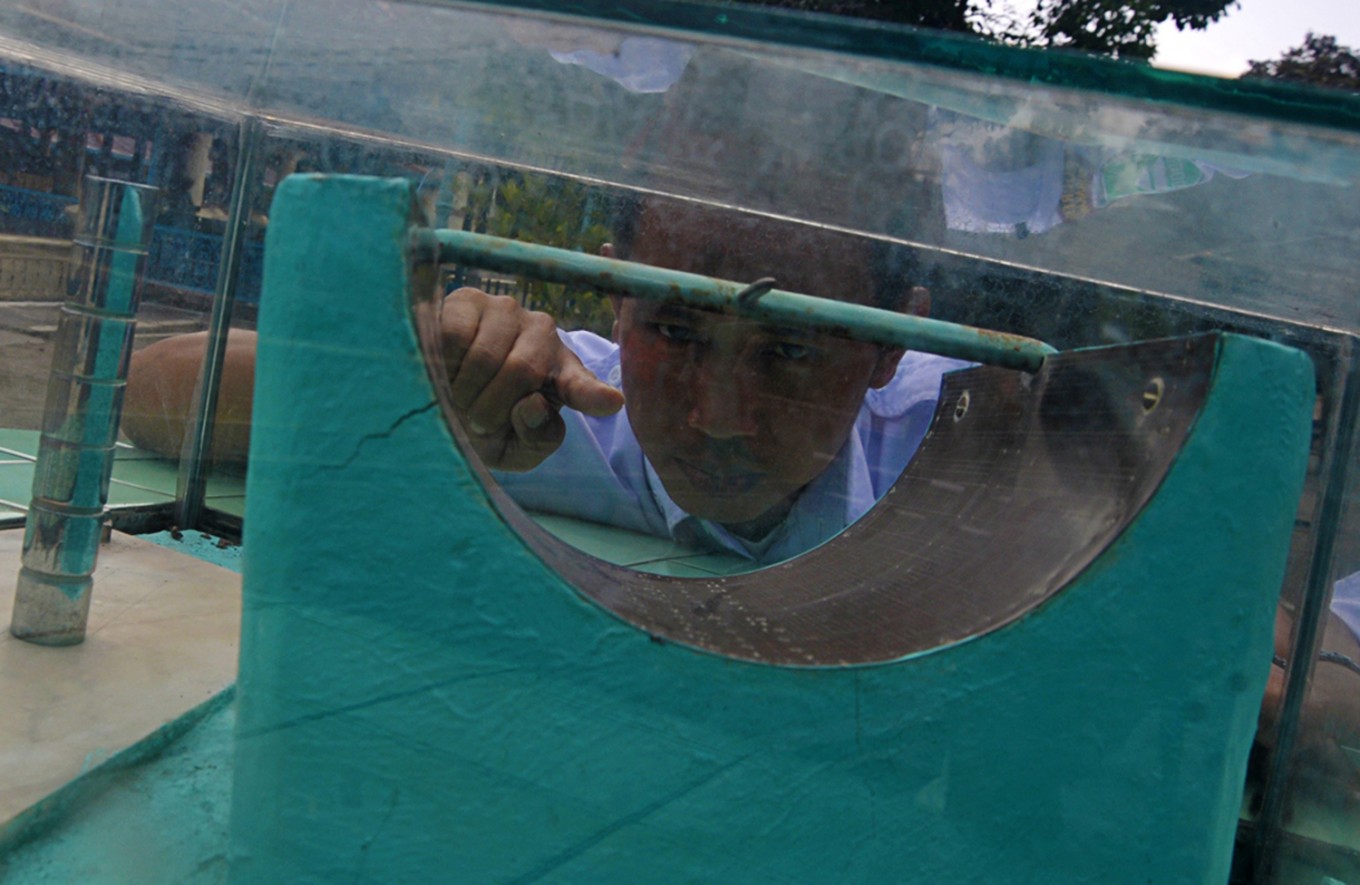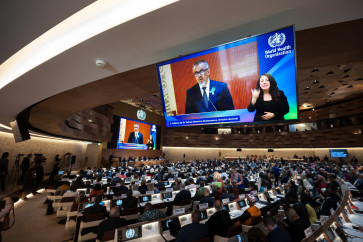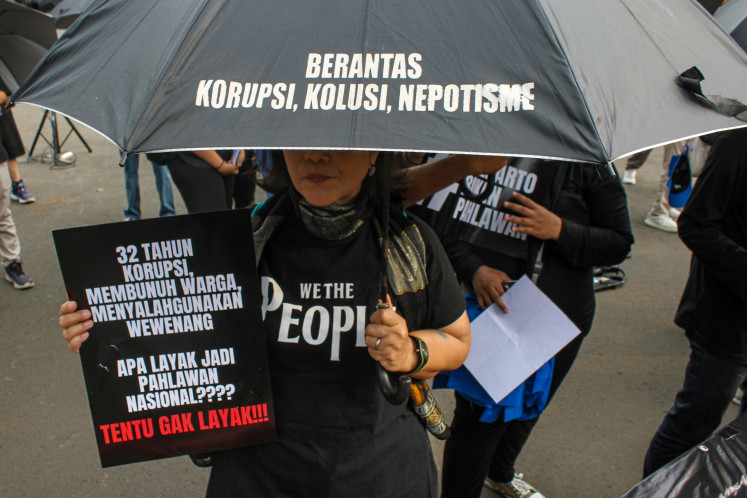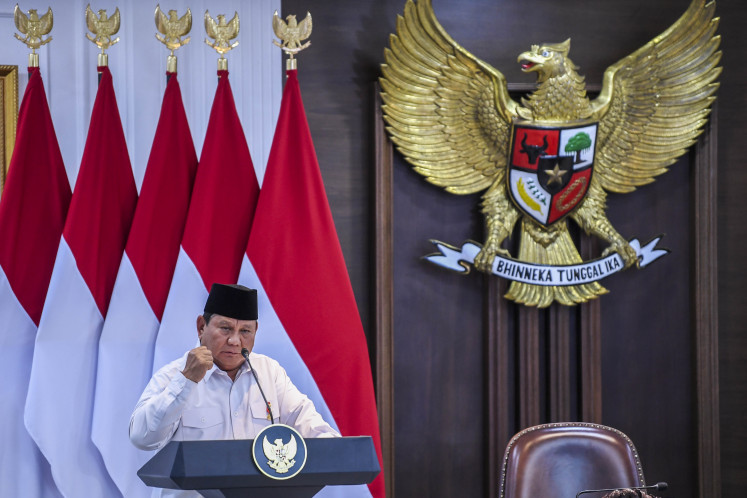Sundial still shows prayer time at Surakarta Grand Mosque
The Grand Mosque of Surakarta in Central Java still uses a sundial to determine the exact time for Muslims in the city to perform dhuhur (midday) and asr (afternoon) prayers. The non-ticking clock has been in operation since 1757.
Change text size
Gift Premium Articles
to Anyone
 Precious heritage – an administrator explains the operation of the sundial at the Surakarta Grand Mosque. The non-ticking clock has been in operation since the mosque was built in 1757 and is still used to determine dhuhur (midday) and asr (afternoon) prayer times. (thejakartapost.com/Ganug Nugroho Adi)
Precious heritage – an administrator explains the operation of the sundial at the Surakarta Grand Mosque. The non-ticking clock has been in operation since the mosque was built in 1757 and is still used to determine dhuhur (midday) and asr (afternoon) prayer times. (thejakartapost.com/Ganug Nugroho Adi)
T
he Grand Mosque of Surakarta in Central Java still uses a sundial, locally known as an ‘istiwak clock’, to determine the exact time for Muslims in the city to perform dhuhur (midday) and asr (afternoon) prayers. The prayer time determining tool has reportedly been in operation since the mosque was built in 1757.
The sundial shows the prayer time by the shadow of a pointer cast by the sun onto a plate emblazoned with the hours of the day. The clock is shaped like a rectangle where the shorter sides have been bent upwards to form a semicircle and layered with a brass plate. To create a shadow on the plate, a 10-centimeter long pointer is placed right in the middle of an 18-cm iron stick connecting the two ends of the brass plate.
When sunlight falls onto the surface of the clock, the shadow of the pointer, which is aligned from north to south, will point to one of the numbers marked on the plate. Like modern clocks, the istiwak clock has 12 numbers marked on its surface.
One of the mosque’s administrators, Abdul Basid, explained how the clock worked through the shadow of the pointer pointing to certain numbers marked on the plate.
“On the western side of the plate, there are numbers from 12 to 6 while on the east, we find the numbers 1 to 6. When the sun shines at 12 sharp and the sky is clear, the shadow of the pointer will be right in between those two sides,” Abdul told thejakartapost.com recently.
He further explained that the istiwak clock had been moved to its current location in the yard of the mosque in 1926, coinciding with the 64th anniversary of Surakarta King Paku Buwana X. The clock was helpful for Muslims wanting to know the dhuhur and asr prayer times and no less accurate than modern clocks, but its operation depended very much on weather conditions, he added.
“On cloudy days and in the evening, the clock cannot operate, because it depends on the sunlight,” said Abdul.
Although Muslims now used modern clocks for prayer time guidance, the istiwak clock remains the main attraction for people to visit the Surakarta Grand Mosque. Many visitors from outside the city take time to inspect the antique clock before they perform prayers.
A visitor from Demak, Zubaidi, said he had often visited the Surakarta Grand Mosque but had only just become aware of the sundial at the mosque, so he decided to give it a close look.
“This istiwak was a modern clock in its era. This is also part of the mosque’s history. It’s good to see that the Surakarta Grand Mosque administrators continue to preserve it,” he said. (ebf)









